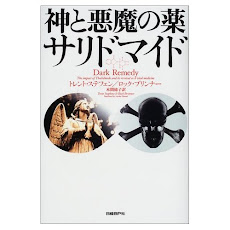我々のCEPー1347をNF治療薬にするという計画は、「セファロン」の不協力で
実りそうもなかった。 そこで、もっと(千倍くらい)強力なPAK遮断剤を探し始めた。
CEPー1347は、前述したように、K252aに比較的長い側鎖をつけた誘導体だ。
ある知人から、K252aに似た化合物スタロスポーリン(ST)に同様な側鎖
をつけると、CEPー1347より20倍くらい強力なPAK遮断剤になること
を耳にした。 しかし、これはある会社内の開発途上物質で、我々には入手不可能
だった。 ここで得るべき大事なヒントは、STの誘導体で、PAK阻害のIC50が
1 nMくらいの物質を見つけ出して、こいつに同じような側鎖を施すことに
よって、「PAK特異的な」阻害剤に変え得るというアイディアであった。色々
スクリーニングしているうちに、それらしいものが海洋産物から見つかった。
もし、海鞘を常食にしている者は癌にならない、という伝説があったとしたら、そ
の由縁は、この誘導体のおかげかもしれない。なんとグアム島の沿岸に棲息する
特殊な海鞘から、STの3位に水酸基がついて化合物が、シドニーの海洋研究
所のピーター・シュップによって、2001年に発見された。特にPAKとPKC
というキナーゼを阻害する作用が強い。 しかしながら、PKC阻害剤は副作用が
強いので、常識的には制癌剤にはなりにくい。 そこでこの誘導体
(STー2001と命名)の9位に、(例えば、CEPー1347にあるような)
長い側鎖をつけることによって、特異的にPKC阻害活性を除き、
「PAK特異的な」阻害剤に変えるというアイディアが生まれた。
ここで更に欲を言えせてもらえば、9位に付ける側鎖として、アルキルアミン (例えば、
ヘキシルアミンなど) を選べば、このST誘導体の水溶性が増すと共に、細胞膜を通
過しやすくなるので、将来の臨床への応用に大いに寄与すると期待される。
さて、STー2001を化学的に合成することは可能であるが、収率が極めて低
いので、企業上実用的ではないと、ある有機化学の専門家にいわれた。従って、
この特殊な海鞘をグアム島から大量に採集して、それから微々たる量の
STー2001をせっせと精製する以外には、今のところ方法がないようだ。
もし、STの3位のみを特異的に水酸化する酵素(ST ヒドロキシラーゼ)を、この海鞘か
ら精製、あるいはその遺伝子をクローンすることが将来できれば、(グアム島ま
で出かけなくとも)実験室内で大量にSTー2001を酵素的に合成することが
できるだろう。そうすれば、夢のPAK遮断剤「STー3009」の実現も可能
になろう。
2002年に、富山県立大学生工研の古米保教授の研究室によって、
STの生合成に関与する14種類の遺伝子がクローンされた。面白いことには、
STの生合成経路を調べてみると、アミノ酸である「トリプトファン」2分子が
まず縮合してSTの芳香環を形成することがわかる。次に糖(ヘキソース)部分が
この芳香環に連結される。ところで、トリプトファンを水酸化する酵素 (TRP ヒドロキシラーゼ、
TPH)は、STの3位に相当するトリプトファン部分(5位)を水酸化することが知られている。
従って、理論的には、(既に結晶化もされている)TPHによって、STの3位を特異的に水酸化
し得る可能性もある。
そこで、STを大量に生合成する放線菌 (Streptomyces staurosporeus) 中に
TPH遺伝子(cDNA)を人工的に挿入して、その遺伝子の発現を IPTG(あるいは
熱ショック)などで効率良く誘導して、STー2001を大量に生合成できる新しい菌株
(STーTPH)を作り出すというアイディアが生まれつつある (実は、最近になって、
地球温暖化のためか、この特殊な海鞘がグアム島沿岸から姿を消しつつあるという
一種の危機に直面しているからだ!)。
ところで、TPHの働きには通常、2種類の異なる補酵素(3価の鉄イオンとBH4/
tetrahydrobiopterin) が必要である。 問題は、2番目の補酵素BH4が
(動物の細胞同様)バクテリアにも存在するかどうかである。 もし、存在しなければ、
バクテリアの培養液中に、この補酵素を補充しなければならない。理論的には、かくして
「STーTPH」菌株中でできたSTー2001を精製し、更に9位にヘキシルアミンを付加する
ために、アミノヘキサノールを加えて脱水縮合すれば、夢の水溶性PAK遮断剤「ST3009」が
誕生するはずである。
2009年9月28日月曜日
2009年9月24日木曜日
名言: 「貧乏人は麦を食え!」
「貧乏人は麦を食え!」という極めて率直な発言をしたのは、池田勇人(吉田内
閣の蔵相)だった。敗戦後まだ間もない1950年、米価が著しく高騰していた
頃の若き蔵相の英知だった(国民、その大部分が「貧民」、から激しい批判を浴
びたが)。勿論、貧乏人の先頭を行く我が家は率先して、米食から麦食(パン食)
に切り換えた。実は、我が家の家事を一手に預かる父(池田氏と同様京大出身で、
7年後輩)は、慢性胃潰瘍を長らく患っていたので、消化の悪いお米より、焼き
立ての食パンの方がずっとこなれ易いから、直ぐ先輩に同調したのだ。以来、我
が家は西洋式のパン食になった。だから、池田勇人の勇ましい発言に感謝せねば
ならない(10年後に、彼自ら首相になった!)。父の死後(ちょうど20年前
の今日!)、我が家(実家)は、また米食に戻ってしまったようだが(多分、安
い「古古米」が市場に溢れるような大変豊かなご時世になったからかもしれない)。
閣の蔵相)だった。敗戦後まだ間もない1950年、米価が著しく高騰していた
頃の若き蔵相の英知だった(国民、その大部分が「貧民」、から激しい批判を浴
びたが)。勿論、貧乏人の先頭を行く我が家は率先して、米食から麦食(パン食)
に切り換えた。実は、我が家の家事を一手に預かる父(池田氏と同様京大出身で、
7年後輩)は、慢性胃潰瘍を長らく患っていたので、消化の悪いお米より、焼き
立ての食パンの方がずっとこなれ易いから、直ぐ先輩に同調したのだ。以来、我
が家は西洋式のパン食になった。だから、池田勇人の勇ましい発言に感謝せねば
ならない(10年後に、彼自ら首相になった!)。父の死後(ちょうど20年前
の今日!)、我が家(実家)は、また米食に戻ってしまったようだが(多分、安
い「古古米」が市場に溢れるような大変豊かなご時世になったからかもしれない)。
A Tiny Impact of Avastin on Cancer (Solid Tumors) and NF Therapy
Avastin, an anti-VEGF monoclonal antibody, was recently reported to improve
the hearing of NF2 (schwannoma) patients (4 in 10) in trials conducted by
a Mass General team. However, since Avastin from Genentech costs around
$15,000 monthly (around 500 times as much as Bio 30), only a few rich NF
patients can afford to keep taking it for the rest of their life.
Serious oncologists in general keep ignoring Avastin (among the most expensive
drugs), simply because it alone does not prolong the life span of cancer
patients. For just like Thalidomide, Avastin could reduce only the size
of solid tumors (by 50% or less) by blocking angiogenesis, but does not
block the metastasis which would kill the patients eventually. Actually
the old drug "Thalidomide" is far more inexpensive and safer than Avastin
for the same purpose (blocking angiogenesis).
NF Patients need an inexpensive "multi-functional" drug which blocks both
metastasis and growth (division) of cancer cells, in addition to angiogenesis,
as do propolis (Bio 30) and a few other anti-PAK drugs on the market such
as DPM (dipyridamole) and Ivermectin which pass BBB (blood brain barrier).
By the way, unlike Thalidomide, Avastin itself does not pass BBB, but just
sequesters VEGF from the blood circulation. Another limitation of Avastin
is the short-life of its therapeutic effect. For it is just a derivative
(humanized) antibody from mouse. In other words, it is similar to human
antibody, but not exactly the same. Therefore, soon or later, patients'
immune system would produce a neutralizing antibody which destroys Avastin.
Thus, the impact of Avastin on cancer/NF therapy would be rather tiny in
a long run, although its "price tag" is currently huge.
the hearing of NF2 (schwannoma) patients (4 in 10) in trials conducted by
a Mass General team. However, since Avastin from Genentech costs around
$15,000 monthly (around 500 times as much as Bio 30), only a few rich NF
patients can afford to keep taking it for the rest of their life.
Serious oncologists in general keep ignoring Avastin (among the most expensive
drugs), simply because it alone does not prolong the life span of cancer
patients. For just like Thalidomide, Avastin could reduce only the size
of solid tumors (by 50% or less) by blocking angiogenesis, but does not
block the metastasis which would kill the patients eventually. Actually
the old drug "Thalidomide" is far more inexpensive and safer than Avastin
for the same purpose (blocking angiogenesis).
NF Patients need an inexpensive "multi-functional" drug which blocks both
metastasis and growth (division) of cancer cells, in addition to angiogenesis,
as do propolis (Bio 30) and a few other anti-PAK drugs on the market such
as DPM (dipyridamole) and Ivermectin which pass BBB (blood brain barrier).
By the way, unlike Thalidomide, Avastin itself does not pass BBB, but just
sequesters VEGF from the blood circulation. Another limitation of Avastin
is the short-life of its therapeutic effect. For it is just a derivative
(humanized) antibody from mouse. In other words, it is similar to human
antibody, but not exactly the same. Therefore, soon or later, patients'
immune system would produce a neutralizing antibody which destroys Avastin.
Thus, the impact of Avastin on cancer/NF therapy would be rather tiny in
a long run, although its "price tag" is currently huge.
2009年9月18日金曜日
A Wisdom for the Potentiation of CAPE-based Propolis
NZ propolis is known to be the richest in CAPE (caffeic acid phenethyl ester)
, the major anti-cancer ingredient in propolis produced in Europe, Far East, and Oceania.
Although CAPE content in NZ propolis was reported to be 6-7 % (60-70 mg
per g of propolis), the highest around the world, for some unknown reason
the current NZ propolis on the market called "Bio 30" contains only one
fifth of the CAPE. Why? It remained a mystery until recently.
Is ethanol extraction of crude propolis insufficient for the full extraction
of CAPE, or Is CAPE converted to CA (caffeic acid) during the processing of crude propolis?
The crude propolis contains an enzyme called esterase which hydrolyzes CAPE
to CA. This enzyme would be activated as soon as the crude propolis is exposed
to water. The first step for the conventional processing of crude propolis
from bee matrix which collects propolis in bee hives is to suspend crude
propolis in water, which allows the wax (lipids) to float and the propolis
to be precipitated. The propolis is then air-dried and extracted by ethanol
which inactivate the esterase and solubilize the anti-cancer ingredients
such as CAPE and pinocembrin (PIN). Finally ethanol is replaced with PG
to make an alcohol-free liquid called Bio 30. Thus, it is most likely that
CAPE is converted to CA (by 70-80%!) in water during the first step.
We are getting a few lines of evidence supporting this notion, which would
solve this mystery around Bio 30.
In my opinion, this "wasteful" first step should be omitted to save the
precious CAPE and also wax which would solubilize CAPE and improve its bioavailability.
Instead, the crude propolis should be extracted directly from the matrix
of hives with ethanol to kill the esterase and extract both CAPE and wax.
By such a simplified procedure, the current Bio 30 (or any other CAPE-based
propolis such as Chinese red propolis ) could be further potentiated 5-10 times, without any extra cost.
Thus, this "tiny" change might revolutionalize the whole propolis industry
for the far more effective therapy of cancers and several other PAK-dependent
diseases.
, the major anti-cancer ingredient in propolis produced in Europe, Far East, and Oceania.
Although CAPE content in NZ propolis was reported to be 6-7 % (60-70 mg
per g of propolis), the highest around the world, for some unknown reason
the current NZ propolis on the market called "Bio 30" contains only one
fifth of the CAPE. Why? It remained a mystery until recently.
Is ethanol extraction of crude propolis insufficient for the full extraction
of CAPE, or Is CAPE converted to CA (caffeic acid) during the processing of crude propolis?
The crude propolis contains an enzyme called esterase which hydrolyzes CAPE
to CA. This enzyme would be activated as soon as the crude propolis is exposed
to water. The first step for the conventional processing of crude propolis
from bee matrix which collects propolis in bee hives is to suspend crude
propolis in water, which allows the wax (lipids) to float and the propolis
to be precipitated. The propolis is then air-dried and extracted by ethanol
which inactivate the esterase and solubilize the anti-cancer ingredients
such as CAPE and pinocembrin (PIN). Finally ethanol is replaced with PG
to make an alcohol-free liquid called Bio 30. Thus, it is most likely that
CAPE is converted to CA (by 70-80%!) in water during the first step.
We are getting a few lines of evidence supporting this notion, which would
solve this mystery around Bio 30.
In my opinion, this "wasteful" first step should be omitted to save the
precious CAPE and also wax which would solubilize CAPE and improve its bioavailability.
Instead, the crude propolis should be extracted directly from the matrix
of hives with ethanol to kill the esterase and extract both CAPE and wax.
By such a simplified procedure, the current Bio 30 (or any other CAPE-based
propolis such as Chinese red propolis ) could be further potentiated 5-10 times, without any extra cost.
Thus, this "tiny" change might revolutionalize the whole propolis industry
for the far more effective therapy of cancers and several other PAK-dependent
diseases.
2009年9月16日水曜日
全く期待外れの民主党「鳩山内閣」人事
一口に言えば、人材不足にもかかわらず、民間の専門家を一人も採用しようとし
ない、いわゆる旧態依然とした党人中心の「派閥人事」である。
小沢幹事長が裏で人事を工作している限り、民主的な適材適所の内閣は誕生しな
い。半年以内に内閣改造は必至である。改造しなければ、かつての細川内閣同様、
内閣の早期解散に追いやられるだろう。
有権者たちの「変化」への期待が大きかっただけに、失望感から来る怒り (逆風
) も殊更強まるだろう。このままだと、来春、桜が咲き始める時分に、鳩山内閣
(実質的には小沢氏の傀儡政権)が散り始める可能性がある。
花咲けど 実一つ結べず 風に散る
問題は、野党側に回わされた自民党が、寄付金 (企業献金) 不足のため、それま
でに空中分解 (破産) しているかどうかである。。。
私個人は、鳩山内閣による内政には余り期待できないが、「岡田外交」による独立国
「ニッポン」の欧米 (特に米国) との対等な外交関係の確立 (敗戦後半世紀以上続く
「米国追従外交」からの脱却) に期待したい。 岡田外相の健闘を心から祈る!
さて、公明党の今後の行方は? 賞味期限の切れた自民党との共闘にはもう旨味
が全くなくなった! それでは、新しい与党の民主党に接近して、社民党のごと
く「おこぼれ」を頂戴せんとするか、それとも共産党のごとく、どの政党とも共
闘せず、かたくなに、いわゆる「是々非々」(実際には「非々」ばかり)の立場を取るだろうか。。。
創価学会の信者たちは、公明党に一体何を望んでいるのだろうか?
ない、いわゆる旧態依然とした党人中心の「派閥人事」である。
小沢幹事長が裏で人事を工作している限り、民主的な適材適所の内閣は誕生しな
い。半年以内に内閣改造は必至である。改造しなければ、かつての細川内閣同様、
内閣の早期解散に追いやられるだろう。
有権者たちの「変化」への期待が大きかっただけに、失望感から来る怒り (逆風
) も殊更強まるだろう。このままだと、来春、桜が咲き始める時分に、鳩山内閣
(実質的には小沢氏の傀儡政権)が散り始める可能性がある。
花咲けど 実一つ結べず 風に散る
問題は、野党側に回わされた自民党が、寄付金 (企業献金) 不足のため、それま
でに空中分解 (破産) しているかどうかである。。。
私個人は、鳩山内閣による内政には余り期待できないが、「岡田外交」による独立国
「ニッポン」の欧米 (特に米国) との対等な外交関係の確立 (敗戦後半世紀以上続く
「米国追従外交」からの脱却) に期待したい。 岡田外相の健闘を心から祈る!
さて、公明党の今後の行方は? 賞味期限の切れた自民党との共闘にはもう旨味
が全くなくなった! それでは、新しい与党の民主党に接近して、社民党のごと
く「おこぼれ」を頂戴せんとするか、それとも共産党のごとく、どの政党とも共
闘せず、かたくなに、いわゆる「是々非々」(実際には「非々」ばかり)の立場を取るだろうか。。。
創価学会の信者たちは、公明党に一体何を望んでいるのだろうか?
2009年9月10日木曜日
DPM (ジピリダモール): 廉価で安全なPAK遮断剤
さて、PAK遮断剤「CEPー1347」やFK228は、RAS癌細胞やNF腫瘍 細胞に「接触阻害」(正常な細胞同士が接触すると、増殖を停止するというユニークな現象)を誘導し、腫瘍の増殖を効果的に抑制するが、まだ治験中で市販への道は、まだまだかなり遠い。そこで天然物ではなく「合成」薬品であるが、半世紀前から市販され、廉価かつ安全なPAK遮断剤を一つ、ここで紹介しよう。
NF2遺伝子産物「メルリン」がPAK阻害蛋白であることは前述した。そして、PAK阻害が「接触阻害」(いわゆる「ギャップ・ジャンクション」の形成) に必要であることも判明している。癌細胞に、この「接触阻害」能力が欠けているのは、PAKが異常に活性化しているからである。いいかえれば、抗癌蛋白「メルリン」によるPAK阻害が「接触阻害」に重要な役割を果たしていることが予想される。しかしながら、メルリン自身は細胞質蛋白で、貫通蛋白ではない。面白いことには、メルリンがある貫通蛋白に結合することが知られている。その蛋白は「CD44」と呼ばれ、ヒアルロン酸(HA)のレセプターであるが、RASを何らかのメカニズムで活性化することが、ドイツのイエナ大学の英国人ヘレン・モリソン のグループによって2007年に明らかにされた(1)。従って、メルリンがCD44の発癌性を抑えていることが予想される。実際、同じ年にペンシルバニア大学の中国出身の獣医、兪 勤 (ユー・キン) のグループは、メルリンがHAとCD44との結合を抑えていることを発見した(2)。
そこで、HAの生合成を抑える市販の化合物を物色しているうちに、最近「DPM」という薬剤に突き当たった。この阻害剤は、HAによるCD44の活性化を遮断するので、抗癌蛋白メルリンと同様、RASによる癌化およびメルリンの不全により発症するNF2腫瘍 (シュワノーマやメニンジオーマ) の増殖を抑えるわけで、これらの癌やNFの特効薬として、有効である可能性がにわかに浮上してきた。
DPMは1950年ごろ、ドイツの製薬会社「ベーリンガー」によって開発された薬で、血小板の凝固を抑える機能があるため、脳溢血などの治療薬として半世紀以上、世界中で広く使用されてきた安全かつ安価な医薬品である。ところが1985年になって、英国のエリザベス・ローデスのグループによって「DPMがメラノーマにも効く」という治験結果が報告された(3)。つまり、DPMには抗癌作用もあるというわけである。さらに1989年には、もう1つの新たな機能、薬剤耐性に関与するMDRというポンプATPase (薬剤を細胞外へ汲み出す酵素) を阻害する作用が、DPMにあることがイスラエルのアブナー・ラムー夫妻によって発見された。従って、薬剤耐性になった癌患者の治療にも役立つ可能性が出てきた。DPMには、PAK遮断剤と同様、癌の転移や血管新生を抑える作用もあることがわかっている。
さて、ごく最近になって、このDPMの薬理作用に大変面白い展開が起こった。私の旧友で、ドイツのミュンスター大学で教授をやっているピーター・プレム はHA合成酵素 (HAS)に関する研究の専門家だが、彼にHAS阻害剤について、問い合わせたところ、なんと「DPMが市販されている薬剤のうちで、最も強いHAS阻害剤だ」という返事がすぐ戻ってきた。実は2004年に、彼の友人であるUKEのウド・シューマッハーとの共同研究で、DPMがHASを阻害することを、偶然見つけたのだそうだ(4)。こうして、DPMが発癌性のRASーPAKシグナル経路を抑えることが判明したわけだ。早速我々は、DPMがNF1癌であるMPNST細胞やNF2腫瘍であるシュワノーマ細胞の増殖を抑えることを実際に確認した。
参考文献
1. Orian-Rousseau, V., Morrison, H., Matzke, A., Kastilan, T. et al. Hepatocyte growth factor-induced Ras activation requires ERM proteins linked to both CD44v6 and F-actin. Mol Biol Cell. 2007, 18, 76-83
2. Bai, Y., Liu, YJ., Wang, H., Xu, Y. et al. Inhibition of the hyaluronan-CD44
interaction by merlin contributes to the tumor-suppressor activity of merlin. Oncogene. 2007, 26, 836-50.
3. Rhodes, E., Misch, K., Edwards, J., Jarrett, P. Dipyridamole for treatment of
melanoma. Lancet. 1985, 1(8430), 693.
4. Prehm, P., Schumacher, U. Inhibition of hyaluronan export from human fibroblasts by inhibitors of multidrug resistance transporters. Biochem Pharmacol. 2004, 68, 1401-10.
NF2遺伝子産物「メルリン」がPAK阻害蛋白であることは前述した。そして、PAK阻害が「接触阻害」(いわゆる「ギャップ・ジャンクション」の形成) に必要であることも判明している。癌細胞に、この「接触阻害」能力が欠けているのは、PAKが異常に活性化しているからである。いいかえれば、抗癌蛋白「メルリン」によるPAK阻害が「接触阻害」に重要な役割を果たしていることが予想される。しかしながら、メルリン自身は細胞質蛋白で、貫通蛋白ではない。面白いことには、メルリンがある貫通蛋白に結合することが知られている。その蛋白は「CD44」と呼ばれ、ヒアルロン酸(HA)のレセプターであるが、RASを何らかのメカニズムで活性化することが、ドイツのイエナ大学の英国人ヘレン・モリソン のグループによって2007年に明らかにされた(1)。従って、メルリンがCD44の発癌性を抑えていることが予想される。実際、同じ年にペンシルバニア大学の中国出身の獣医、兪 勤 (ユー・キン) のグループは、メルリンがHAとCD44との結合を抑えていることを発見した(2)。
そこで、HAの生合成を抑える市販の化合物を物色しているうちに、最近「DPM」という薬剤に突き当たった。この阻害剤は、HAによるCD44の活性化を遮断するので、抗癌蛋白メルリンと同様、RASによる癌化およびメルリンの不全により発症するNF2腫瘍 (シュワノーマやメニンジオーマ) の増殖を抑えるわけで、これらの癌やNFの特効薬として、有効である可能性がにわかに浮上してきた。
DPMは1950年ごろ、ドイツの製薬会社「ベーリンガー」によって開発された薬で、血小板の凝固を抑える機能があるため、脳溢血などの治療薬として半世紀以上、世界中で広く使用されてきた安全かつ安価な医薬品である。ところが1985年になって、英国のエリザベス・ローデスのグループによって「DPMがメラノーマにも効く」という治験結果が報告された(3)。つまり、DPMには抗癌作用もあるというわけである。さらに1989年には、もう1つの新たな機能、薬剤耐性に関与するMDRというポンプATPase (薬剤を細胞外へ汲み出す酵素) を阻害する作用が、DPMにあることがイスラエルのアブナー・ラムー夫妻によって発見された。従って、薬剤耐性になった癌患者の治療にも役立つ可能性が出てきた。DPMには、PAK遮断剤と同様、癌の転移や血管新生を抑える作用もあることがわかっている。
さて、ごく最近になって、このDPMの薬理作用に大変面白い展開が起こった。私の旧友で、ドイツのミュンスター大学で教授をやっているピーター・プレム はHA合成酵素 (HAS)に関する研究の専門家だが、彼にHAS阻害剤について、問い合わせたところ、なんと「DPMが市販されている薬剤のうちで、最も強いHAS阻害剤だ」という返事がすぐ戻ってきた。実は2004年に、彼の友人であるUKEのウド・シューマッハーとの共同研究で、DPMがHASを阻害することを、偶然見つけたのだそうだ(4)。こうして、DPMが発癌性のRASーPAKシグナル経路を抑えることが判明したわけだ。早速我々は、DPMがNF1癌であるMPNST細胞やNF2腫瘍であるシュワノーマ細胞の増殖を抑えることを実際に確認した。
参考文献
1. Orian-Rousseau, V., Morrison, H., Matzke, A., Kastilan, T. et al. Hepatocyte growth factor-induced Ras activation requires ERM proteins linked to both CD44v6 and F-actin. Mol Biol Cell. 2007, 18, 76-83
2. Bai, Y., Liu, YJ., Wang, H., Xu, Y. et al. Inhibition of the hyaluronan-CD44
interaction by merlin contributes to the tumor-suppressor activity of merlin. Oncogene. 2007, 26, 836-50.
3. Rhodes, E., Misch, K., Edwards, J., Jarrett, P. Dipyridamole for treatment of
melanoma. Lancet. 1985, 1(8430), 693.
4. Prehm, P., Schumacher, U. Inhibition of hyaluronan export from human fibroblasts by inhibitors of multidrug resistance transporters. Biochem Pharmacol. 2004, 68, 1401-10.
2009年9月8日火曜日
岡田外相へ進言: 「大使」たるべき人物の人選
一般論
大使の任命について、一言したい。私は豪州に21年以上永住しているが、駐豪
日本大使の名前を一人も知らない。なぜかといえば、しょっちゅう(数年毎に目
まぐるしく)変わるからだ。さらに、我々(永住日本人)の利益とは、ほとんど
無関係の仕事をしているからだ。我々と日本大使館(厳密にいえば、メルボルン
の領事館)と関係は、10年に一度、長期パスポートの延長と、最近は(総選挙
と参議院選挙)の在外投票にタッチすることだけだ。実際には、これらの仕事を
しているのは、大使や領事自身ではなく、その下で長らく現地で働く事務官たち
である。
そこで、提案したいのは、大使や領事も、その任地で長らく働き、現地の人々や
文化に精通している日本人から選ぶべきであるということだ。
一例をあげれば、インド駐在のニュージーランド大使(高等弁務官)となったエ
ドモント・ヒラリー卿(1919ー2008)だ。 彼は1953年に、シェル
パのリーダー(テンジン)と共にエベレスト初登頂に成功して以来、現地ネパー
ルの貧しいシェルパ民族のために、病院や学校を建設する慈善事業に長らく携わっ
た。こういう人物が大使に任命されるべきで、現地の実情を全く知らない高級
(外務)官僚が(単なる「腰かけ」で)大使として、数年だけ現地に滞在してい
ても、何の実益にもならない(国税の無駄使いに過ぎない!)。
国連代表の人選
従来の自民党による「米国追従」外交を打破し、「米国と対等」で我が国の外交
を推進するためには、「岡田外交」に相応しい新しい国連大使(代表)を緊急に
抜擢する必要がある。私は、高須(現)国連代表にかわって、リベラルな天木直
人氏(元レバノン駐在大使)を国連代表に起用することを、強く推薦したい。
天木さんは、2003年に小泉政権が米国のブッシュ政権に追従して、イラク侵
略戦争に加担しようとした瞬間、先見の明をもって、(現職の外交官で)ただ独
り、勇気をもって、小泉政権のイラク戦争への加担に対して、親書ではっきり
「ノー」を表明して、大使辞任を強要された、筋金入りのいわば「独立外交官」
である。彼は1969年に京大から、外務省に入省した(東大出身の高須さんと
偶然にも同期)。彼の外交官としての気概は、著書「さらば、外務省」に如実に
述べられている。
彼の豊かな経験と気概によって、日本の「平和外交」を国連という国際舞台で、
強く推進してもらおうではないか! リベラルな現国連事務総長(潘 基文)の
片腕として、地球から戦争をなくし、さらに地球の温暖化を防ぎ、世界全体の環
境を改善するための政策(呼びかけ)を実行してもらいましょう!
国際外交をいつまでも欧米人たちだけに任せておかず、今後は我々アジア人がイ
ニシアチブをとって世界の外交を動かしていかなければ、世界の真の平和は望め
ない! 丸田 浩(66、メルボルン永住)
大使の任命について、一言したい。私は豪州に21年以上永住しているが、駐豪
日本大使の名前を一人も知らない。なぜかといえば、しょっちゅう(数年毎に目
まぐるしく)変わるからだ。さらに、我々(永住日本人)の利益とは、ほとんど
無関係の仕事をしているからだ。我々と日本大使館(厳密にいえば、メルボルン
の領事館)と関係は、10年に一度、長期パスポートの延長と、最近は(総選挙
と参議院選挙)の在外投票にタッチすることだけだ。実際には、これらの仕事を
しているのは、大使や領事自身ではなく、その下で長らく現地で働く事務官たち
である。
そこで、提案したいのは、大使や領事も、その任地で長らく働き、現地の人々や
文化に精通している日本人から選ぶべきであるということだ。
一例をあげれば、インド駐在のニュージーランド大使(高等弁務官)となったエ
ドモント・ヒラリー卿(1919ー2008)だ。 彼は1953年に、シェル
パのリーダー(テンジン)と共にエベレスト初登頂に成功して以来、現地ネパー
ルの貧しいシェルパ民族のために、病院や学校を建設する慈善事業に長らく携わっ
た。こういう人物が大使に任命されるべきで、現地の実情を全く知らない高級
(外務)官僚が(単なる「腰かけ」で)大使として、数年だけ現地に滞在してい
ても、何の実益にもならない(国税の無駄使いに過ぎない!)。
国連代表の人選
従来の自民党による「米国追従」外交を打破し、「米国と対等」で我が国の外交
を推進するためには、「岡田外交」に相応しい新しい国連大使(代表)を緊急に
抜擢する必要がある。私は、高須(現)国連代表にかわって、リベラルな天木直
人氏(元レバノン駐在大使)を国連代表に起用することを、強く推薦したい。
天木さんは、2003年に小泉政権が米国のブッシュ政権に追従して、イラク侵
略戦争に加担しようとした瞬間、先見の明をもって、(現職の外交官で)ただ独
り、勇気をもって、小泉政権のイラク戦争への加担に対して、親書ではっきり
「ノー」を表明して、大使辞任を強要された、筋金入りのいわば「独立外交官」
である。彼は1969年に京大から、外務省に入省した(東大出身の高須さんと
偶然にも同期)。彼の外交官としての気概は、著書「さらば、外務省」に如実に
述べられている。
彼の豊かな経験と気概によって、日本の「平和外交」を国連という国際舞台で、
強く推進してもらおうではないか! リベラルな現国連事務総長(潘 基文)の
片腕として、地球から戦争をなくし、さらに地球の温暖化を防ぎ、世界全体の環
境を改善するための政策(呼びかけ)を実行してもらいましょう!
国際外交をいつまでも欧米人たちだけに任せておかず、今後は我々アジア人がイ
ニシアチブをとって世界の外交を動かしていかなければ、世界の真の平和は望め
ない! 丸田 浩(66、メルボルン永住)
Therapeutic Hope for TSC (Tuberous Sclerosis) Patients
A complex disease called TSC (Tuberous Sclerosis) is caused by deletion or dysfunction of either TSC1 or TSC2 genes. Both gene products are tumor suppressors which form a complex that normally serves as a GAP (GTPase activating protein=attenuator) of a GTPase /G protein called Rheb. Thus, in TSC patients, Rheb is abnormally activated (becoming oncogenic!), and then activates another kinase "TOR" that in turn activates the potentially oncogenic S6 kinase. Thus, in many cases TSC is associated with a variety of tumors, which mainly develop in brain, spleen and kidney. Since these tumors very often develop in a quite early stage of life, most of TSC patients' life span is significantly shorter than non-TSC people's. Unfortunately, so far no effective (FDA-approved) therapeutic is available on the market. However, since "TOR" (target of rapamycin) could be effectively inhibited by the antibiotic "Rapamycin" or its more potent derivative "CCI-779" in rodent TSC models (1), in the future (in several years, hopefully) when clinical trials of "CCI-779" are successfully completed for the approval by FDA, the anti-cancer drug "CCI-779" will become available for the treatment of TSC and other formidable tumors.
Of course, many TSC patients, in particular parents of TSC children, often asked me if there is any effective "alternative" (non-FDA-approved) medicines or natural products which would be helpful for improving the conditions of TSC patients. In the past, until very recently, sadly I had to answer nothing but "No". However, eventually this year, I would be able to say to these TSC patients, "YES, YOU CAN have a specific alternative medication. There are a few potentially effective natural anti-PAK products on the market which would be helpful for TSC and other formidable diseases such as NF (neurofibromatosis) ". I will tell you how the situation has been dramatically changed. It has nothing to do with Barack Obama's new administration at the White House, but a few dedicated bio-medical scientists discovered something useful for the therapy of TSC patients.
The kinase "PAK" is essential for the growth of more than 70% of cancers and NF tumors, and therefore we have developed a series of anti-PAK drugs (synthetic chemical compounds) and also identified several anti-PAK natural products available on the market inexpensively, such as NZ propolis extract called "Bio 30", curcumin, ivermectin, and vitamin K2 (menaquinone-7) from "Natto", for these PAK-dependent tumors.
Interestingly, this year, a few scientific groups began providing an evidence suggesting that TSC tumors appear to be among these PAK-dependent tumors. First of all, curcumin, a yellow spice in Indian curry, inhibits PAK directly (2). Secondly, curcumin blocks the Raptor-TOR interaction (3). Raptor is a protein essential for the oncogenicity of TOR, and therefore, curcumin could block the oncogenic TOR signaling in TSC tumors. However, the bioavailability of curcumin alone is very poor (mainly due to water-insolubility), and without liposome or CD (cyclodextrin) which would solubilize curcumin, curcumin alone won't be effective for clinical application.
However, Bio 30, which is a water-miscible extract, and "Natto", a fermented sticky soybean product, which has been a traditional Japanese cuisine for a thousand years, would be effective for the treatment of both NF and TSC tumors as well as several PAK-dependent cancers such as pancreatic, colon, breast and prostate cancers as well as glioma, melanoma and MM (multiple-myeloma).
Also around two years ago, it was found that PAK inactivates the tumor suppressor "FOXO" that normally suppresses "Raptor" gene (4-6). In other words, these natural anti-PAK products on the market inactivate "TOR" by down-regulating "Raptor" in TSC tumors. Thus, I am now pretty convinced that TSC tumors could be treated with these anti-PAK products, as NF tumors.
Currently more than 150 NF patients are in my trials of Bio 30 world-wide, and we would welcome any TSC patients to join my trials. The recommended daily dose of Bio 30 (alcohol-free liquid) is 1 ml per 10 kg of body weight, and it costs only a dollar or so for the daily treatment. It causes no side effect, except for an allergic skin reaction which occurs only in 1% of population, due to its CAPE (caffeic acid phenethyl ester) which is the major anti-PAK ingredient (7).
If you wish to order Bio 30 (25 ml bottles) at NF/TSC discount price by joining my trials, please contact directly Annette Rea of Manuka Health, NZ: Annette@manukahealth.co.nz
References:
1. Lee, L., Sudentas, P., Donohue, B., Asrican, K. et al. Efficacy of a rapamycin analog (CCI-779) and IFN-gamma in tuberous sclerosis mouse models. Genes Chromosomes Cancer. 2005, 42, 213-27.
2. Cai, XZ., Wang, J., Li, XD., Wang, GL.et al. Curcumin suppresses proliferation and invasion in human gastric cancer cells by downregulation of PAK1 activity and cyclin D1 expression. Cancer Biol Ther. 2009, 8, 1360-8.
3. Beevers, C., Chen, L., Liu, L., Luo, Y. et al. Curcumin disrupts the Mammalian target of rapamycin-raptor complex. Cancer Res. 2009, 69, 1000-8.
4. Maruta, H. An innovated approach to in vivo screening for the major anti-cancer drugs. In “Horizons in Cancer Research” 2010: 41 (ed. Morrison, EP), pp249-59, Nova Science Publishers.
5. Jia, K., Chen, D., Riddle, D. The TOR pathway interacts with the insulin signaling pathway to regulate C. elegans larval development, metabolism and life span. Development. 2004, 131, 3897-906.
6. Southgate, R., Neill, B., Prelovsek, O., El-Osta, A. et al. FOXO regulates the expression of 4E-BP1 and inhibits mTOR signaling in mammalian skeletal muscle. J Biol Chem. 2007. 282, 21176-86.
7. Demestre, M. Messerli, S., Celli, N., Shahhossini, M. et al. CAPE (Caffeic Acid Phenethyl Ester)-based Propolis Extract (Bio 30) Suppresses the Growth of Human Neurofibromatosis(NF) Tumor Xenografts in Mice. Phytother. Res. 2009, 23, 226-230.
The corresponding author:
Prof. Hiroshi Maruta, Manager
NPO “NF CURE Japan”,
Melbourne, Australia.
The former head of Tumor Suppressor Lab.
Ludwig Institute for Cancer Research
(Melbourne Branch)
E-mail: maruta19420@mac.com or julie8860@gmail.com
Of course, many TSC patients, in particular parents of TSC children, often asked me if there is any effective "alternative" (non-FDA-approved) medicines or natural products which would be helpful for improving the conditions of TSC patients. In the past, until very recently, sadly I had to answer nothing but "No". However, eventually this year, I would be able to say to these TSC patients, "YES, YOU CAN have a specific alternative medication. There are a few potentially effective natural anti-PAK products on the market which would be helpful for TSC and other formidable diseases such as NF (neurofibromatosis) ". I will tell you how the situation has been dramatically changed. It has nothing to do with Barack Obama's new administration at the White House, but a few dedicated bio-medical scientists discovered something useful for the therapy of TSC patients.
The kinase "PAK" is essential for the growth of more than 70% of cancers and NF tumors, and therefore we have developed a series of anti-PAK drugs (synthetic chemical compounds) and also identified several anti-PAK natural products available on the market inexpensively, such as NZ propolis extract called "Bio 30", curcumin, ivermectin, and vitamin K2 (menaquinone-7) from "Natto", for these PAK-dependent tumors.
Interestingly, this year, a few scientific groups began providing an evidence suggesting that TSC tumors appear to be among these PAK-dependent tumors. First of all, curcumin, a yellow spice in Indian curry, inhibits PAK directly (2). Secondly, curcumin blocks the Raptor-TOR interaction (3). Raptor is a protein essential for the oncogenicity of TOR, and therefore, curcumin could block the oncogenic TOR signaling in TSC tumors. However, the bioavailability of curcumin alone is very poor (mainly due to water-insolubility), and without liposome or CD (cyclodextrin) which would solubilize curcumin, curcumin alone won't be effective for clinical application.
However, Bio 30, which is a water-miscible extract, and "Natto", a fermented sticky soybean product, which has been a traditional Japanese cuisine for a thousand years, would be effective for the treatment of both NF and TSC tumors as well as several PAK-dependent cancers such as pancreatic, colon, breast and prostate cancers as well as glioma, melanoma and MM (multiple-myeloma).
Also around two years ago, it was found that PAK inactivates the tumor suppressor "FOXO" that normally suppresses "Raptor" gene (4-6). In other words, these natural anti-PAK products on the market inactivate "TOR" by down-regulating "Raptor" in TSC tumors. Thus, I am now pretty convinced that TSC tumors could be treated with these anti-PAK products, as NF tumors.
Currently more than 150 NF patients are in my trials of Bio 30 world-wide, and we would welcome any TSC patients to join my trials. The recommended daily dose of Bio 30 (alcohol-free liquid) is 1 ml per 10 kg of body weight, and it costs only a dollar or so for the daily treatment. It causes no side effect, except for an allergic skin reaction which occurs only in 1% of population, due to its CAPE (caffeic acid phenethyl ester) which is the major anti-PAK ingredient (7).
If you wish to order Bio 30 (25 ml bottles) at NF/TSC discount price by joining my trials, please contact directly Annette Rea of Manuka Health, NZ: Annette@manukahealth.co.nz
References:
1. Lee, L., Sudentas, P., Donohue, B., Asrican, K. et al. Efficacy of a rapamycin analog (CCI-779) and IFN-gamma in tuberous sclerosis mouse models. Genes Chromosomes Cancer. 2005, 42, 213-27.
2. Cai, XZ., Wang, J., Li, XD., Wang, GL.et al. Curcumin suppresses proliferation and invasion in human gastric cancer cells by downregulation of PAK1 activity and cyclin D1 expression. Cancer Biol Ther. 2009, 8, 1360-8.
3. Beevers, C., Chen, L., Liu, L., Luo, Y. et al. Curcumin disrupts the Mammalian target of rapamycin-raptor complex. Cancer Res. 2009, 69, 1000-8.
4. Maruta, H. An innovated approach to in vivo screening for the major anti-cancer drugs. In “Horizons in Cancer Research” 2010: 41 (ed. Morrison, EP), pp249-59, Nova Science Publishers.
5. Jia, K., Chen, D., Riddle, D. The TOR pathway interacts with the insulin signaling pathway to regulate C. elegans larval development, metabolism and life span. Development. 2004, 131, 3897-906.
6. Southgate, R., Neill, B., Prelovsek, O., El-Osta, A. et al. FOXO regulates the expression of 4E-BP1 and inhibits mTOR signaling in mammalian skeletal muscle. J Biol Chem. 2007. 282, 21176-86.
7. Demestre, M. Messerli, S., Celli, N., Shahhossini, M. et al. CAPE (Caffeic Acid Phenethyl Ester)-based Propolis Extract (Bio 30) Suppresses the Growth of Human Neurofibromatosis(NF) Tumor Xenografts in Mice. Phytother. Res. 2009, 23, 226-230.
The corresponding author:
Prof. Hiroshi Maruta, Manager
NPO “NF CURE Japan”,
Melbourne, Australia.
The former head of Tumor Suppressor Lab.
Ludwig Institute for Cancer Research
(Melbourne Branch)
E-mail: maruta19420@mac.com or julie8860@gmail.com
2009年9月2日水曜日
Propolis is Good for Diabetes, Why?
Propolis in general, whether it is based on CAPE or ARC (Artepillin C),
has been known to be useful for the treatment of diabetes (both types 1
and 2). However, it remained unclear for a while how propolis could reduce
the blood sugar levels. Well, in 2007, a Korean group led by Hyeon Soo Kim
at Korean University Medical School in Seoul found that CAPE activates the
kinase AMPK somehow, leading to the reduction of blood sugar level by activating
a glucose transporter called "GLUT-4". Then, I wonder why ARC-based propolis
such as Brazilian green propolis is also effective in reducing the blood
sugar levels. I postulate that ARC must be responsible for this anti-diabetic
action, because nothing else in this propolis is good for the treatment
of cancers, NF, TSC and several other PAK-dependent diseases.
What is the most common biological property shared between CAPE and ARC?
Both block selectively the oncogenic kinase PAK.
Interestingly, there are several other natural products that block the kinase
PAK as well as activate the kinase AMPK, as does CAPE: curcumin, berberine,
resveratrol (trans R3), salidroside, and triterpenoids from bitter melon,
Moreover, both PAK inactivation and AMPK activation lead to the same outcome,
activation of the tumor suppressor "FOXO" which is essential for both the
activation of Hsp16 gene and the longevity. So I would hypothesize that
these natural products activate AMPK most likely by inactivating PAK which
I think normally inactivates AMPK somehow, proposing a new unified formula:
anti-PAK drugs=AMPK activators=FOXO activators=Hsp16 activators= "elixirs"
In other words, the best (quickest and least expensive) in vivo drug screening
system to explore the anti-PAK drugs (=elixirs) would be to monitor the
GFP expression in C. elegans (strain CL2070) which carries the Hsp16-GFP
fusion gene, that is rapidly activated shortly after heat-shock treatment,
only if PAK is blocked.
has been known to be useful for the treatment of diabetes (both types 1
and 2). However, it remained unclear for a while how propolis could reduce
the blood sugar levels. Well, in 2007, a Korean group led by Hyeon Soo Kim
at Korean University Medical School in Seoul found that CAPE activates the
kinase AMPK somehow, leading to the reduction of blood sugar level by activating
a glucose transporter called "GLUT-4". Then, I wonder why ARC-based propolis
such as Brazilian green propolis is also effective in reducing the blood
sugar levels. I postulate that ARC must be responsible for this anti-diabetic
action, because nothing else in this propolis is good for the treatment
of cancers, NF, TSC and several other PAK-dependent diseases.
What is the most common biological property shared between CAPE and ARC?
Both block selectively the oncogenic kinase PAK.
Interestingly, there are several other natural products that block the kinase
PAK as well as activate the kinase AMPK, as does CAPE: curcumin, berberine,
resveratrol (trans R3), salidroside, and triterpenoids from bitter melon,
Moreover, both PAK inactivation and AMPK activation lead to the same outcome,
activation of the tumor suppressor "FOXO" which is essential for both the
activation of Hsp16 gene and the longevity. So I would hypothesize that
these natural products activate AMPK most likely by inactivating PAK which
I think normally inactivates AMPK somehow, proposing a new unified formula:
anti-PAK drugs=AMPK activators=FOXO activators=Hsp16 activators= "elixirs"
In other words, the best (quickest and least expensive) in vivo drug screening
system to explore the anti-PAK drugs (=elixirs) would be to monitor the
GFP expression in C. elegans (strain CL2070) which carries the Hsp16-GFP
fusion gene, that is rapidly activated shortly after heat-shock treatment,
only if PAK is blocked.
登録:
コメント (Atom)










































































![リオ五輪男子体操団体:日本(金)、ロシア[銀]、中国[銅]。](https://blogger.googleusercontent.com/img/b/R29vZ2xl/AVvXsEjHS61FORcH43CteZVfJzLmbqvNwOIliOSMpTpRtEi7x8j1ZwPk5rDaZovTrwuZxfDDtdEDSj673it735LF0mweIunaj7ja07lURBDYTV6wPMaAlumFt3aWWzYbHZgIaxcOLk_OKEMyQ3lX/s1600/2016+taiso+gold.jpg)
![皇太子(明仁)による沖縄訪問 [1975年]](https://blogger.googleusercontent.com/img/b/R29vZ2xl/AVvXsEjvSQrzV7yw_4gVQSwxZP_jh4VnEJscSqOqbiBh0VdAK3CRddXRqkd70JdLyws9fGejk-FGVmXWbHvSxlF3f8UogTyf9KXbqU1NGXesvcx2Hlsd6uq81AHweeioc61wynq3d2IYuyolijgT/s1600/akihito+message.jpg)




















































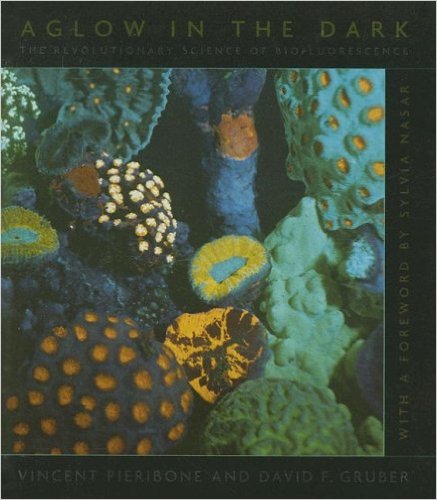














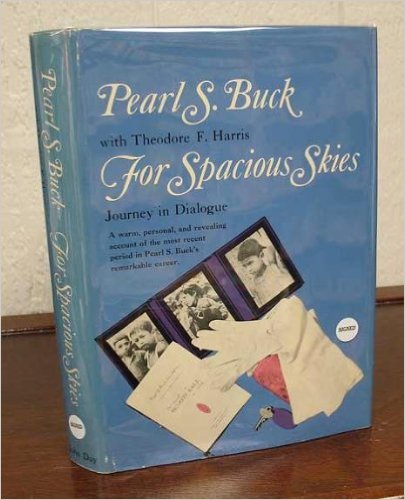














































































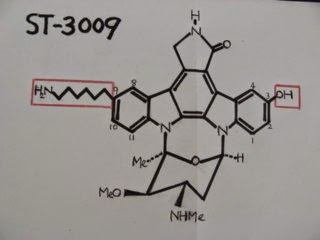







































![アルニカ [ウサギ菊]](https://blogger.googleusercontent.com/img/b/R29vZ2xl/AVvXsEilqv0qou-4NpoUh1PFWYK0FSaozKazee0VYGxsFtfjBma46ya9yxqB6X9Ziuob25tNRpBbnFIcUFlOEjz1WcAjVNzjGl1E-QbDgE7VOLkjZDx0eplJ1WJHf0fTEWXxf8F5G-cHUhqHELY9/s1600/ArnicaS.jpg)


















































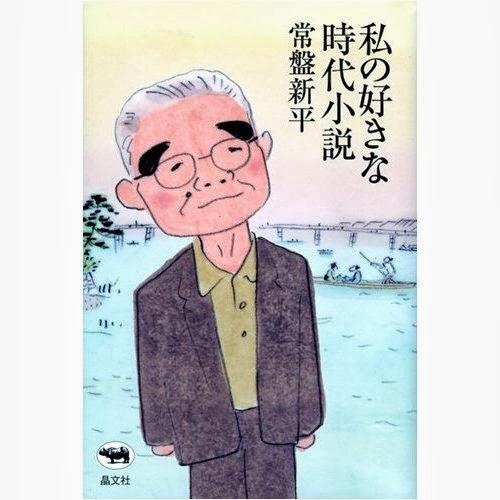










































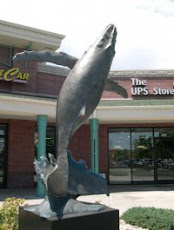










































.jpg)
















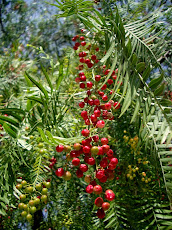






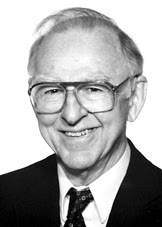








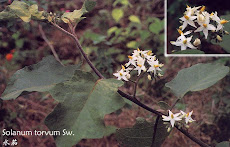







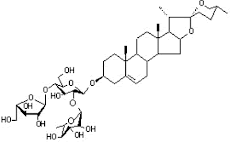















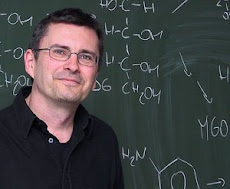


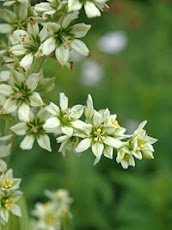








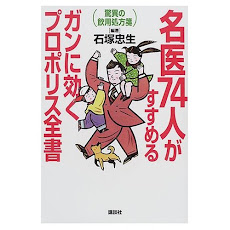



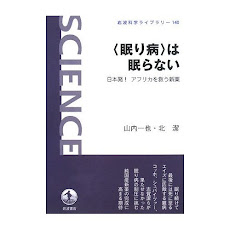






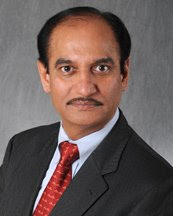





.jpg)






